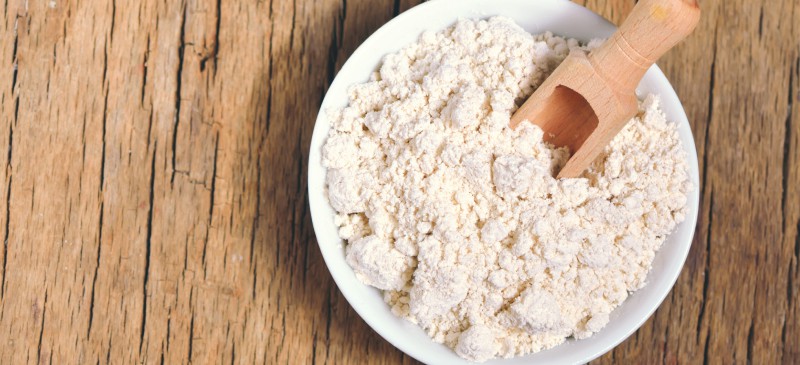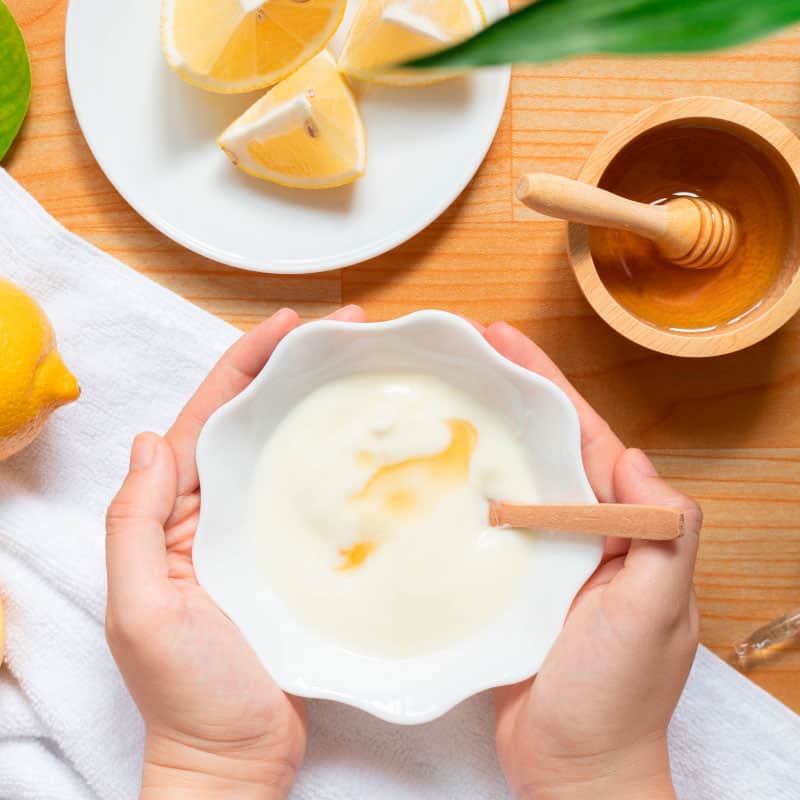This Dr. Axe content is medically reviewed or fact checked to ensure factually accurate information.
With strict editorial sourcing guidelines, we only link to academic research institutions, reputable media sites and, when research is available, medically peer-reviewed studies. Note that the numbers in parentheses (1, 2, etc.) are clickable links to these studies.
The information in our articles is NOT intended to replace a one-on-one relationship with a qualified health care professional and is not intended as medical advice.
This article is based on scientific evidence, written by experts and fact checked by our trained editorial staff. Note that the numbers in parentheses (1, 2, etc.) are clickable links to medically peer-reviewed studies.
Our team includes licensed nutritionists and dietitians, certified health education specialists, as well as certified strength and conditioning specialists, personal trainers and corrective exercise specialists. Our team aims to be not only thorough with its research, but also objective and unbiased.
The information in our articles is NOT intended to replace a one-on-one relationship with a qualified health care professional and is not intended as medical advice.
Colloidal Oatmeal Benefits for Skin
May 20, 2024

Colloidal oatmeal is a finely ground form of oats that has been used for centuries to boost skin health. It can be used topically as a protectant, soothing moisturizer, cleanser and itch-reliever. It’s also amazing for health, particularly skin health, because of its antioxidant and anti-inflammatory abilities.
For these reasons, it’s no surprise that you can easily find colloidal oatmeal in all kinds of body care products today from soaps and shampoos to shaving gels and lotions.
You can even make your own colloidal oatmeal at home to use in baths, face masks and cleansers. It has been shown scientifically to improve all kinds of common skin concerns, including eczema, psoriasis, sunburn, bug bites, hives and rashes. Plus, it’s safe for children and pets as well.
What Is Colloidal Oatmeal?
Colloidal oatmeal is a natural product that is created by grinding oat grains (Avena sativa) into a very fine powder. By grinding the oats, they are capable of being evenly dispersed and completely mixed into a bath or into various skin care products.
Colloidal oatmeal is scientifically known to have a complex chemical makeup, including proteins, lipids, polysaccharides, flavonoids, vitamins and minerals. This special form of oatmeal has a long history of use in skin care due to its cleansing, moisturizing, antioxidative and anti-inflammatory properties.
Can you eat colloidal oatmeal? It is not meant for internal use, but plain, pure colloidal oatmeal really is the same as regular oats; they’re just oats in a ground-up, powdery state.
So while colloidal oatmeal is definitely intended for topical use, if you create it at home by grinding up your breakfast oats, then yes, you are using a perfectly edible skin care product. You truly know exactly what is going on your skin.
For topical use, the preparation of colloidal oatmeal is standardized by the U.S. Pharmacopeia. The various clinical benefits of colloidal oatmeal are said to come from its “chemical polymorphism.” Credit for its ability to help the skin hold moisture and heal dryness goes to its heavy concentration of beta-glucan and starches while its cleansing ability is owed to its saponin content.
What about its antioxidant and anti-inflammatory properties? That would be thanks to the fact that oatmeal contains various kinds of phenols, which are beneficial compounds naturally found in plants. These oatmeal phenols are also impressively known for being strong ultraviolet absorbers.
Health Benefits
1. Decreases atopic dermatitis (eczema) symptoms
Atopic dermatitis, also referred to as eczema, has been shown in numerous studies to be improved by the topical use of colloidal oatmeal. Results from two clinical studies published in 2017 in the Journal of Drugs in Dermatology demonstrate how the use of a 1 percent colloidal oatmeal cream alone effectively decreased symptoms of mild to moderate atopic dermatitis.
Another clinical study published in 2016 found that “extracts of colloidal oatmeal were found to induce the expression of genes related to epidermal differentiation, tight junctions and lipid regulation in skin, and provide pH-buffering capacity.”
This study looked at the effects of applying a colloidal oatmeal lotion to 50 healthy female subjects who had moderate to severe dry skin on their lower legs. The subjects exhibited significant clinical improvements in dryness, moisture level and skin barrier health. Overall, colloidal oatmeal appears not only to improve dryness, but also to strengthen skin barrier.
In research using animal models also published in the Journal of Drugs in Dermatology, avenanthramides have been shown to be the principle polyphenolic antioxidants in oats, which are able to calm inflammation and itching.
2. Treats psoriasis
Plaque psoriasis, the most common form of psoriasis, causes red, scaly skin patches on the body that can be itchy and painful. Is bathing in oats good for psoriasis?
Just like with eczema, colloidal oatmeal has been identified as a helpful form of natural treatment for psoriasis because of its inherent anti-inflammatory and moisturizing properties, according to research conducted at the University of Louisville’s Division of Dermatology.
3. Relieves sunburn
It’s always best to avoid sunburns and use a natural sunscreen, but sometimes no matter how hard we try, we end up with our skin getting burnt after spending time outdoors. Studies show that colloidal oatmeal can help calm the redness, inflammation, itchiness and pain that often accompanies a sunburn.
You can mix colloidal oatmeal powder with water to make a paste and apply it to areas of concern. Or, if the area is really large, it’s probably best to immerse yourself in a tepid oatmeal bath.
4. Helps manage rashes and bug bites
Colloidal oatmeal can also help calm the itch and inflammation due to poison ivy, poison oak or poison sumac, as well as bug bites.
When skin is itchy and irritated, its pH level may be too high or too low. Colloidal oatmeal acts as a buffering agent and can help bring skin pH back to normal levels, especially if it’s too high, which can help calm the itch of poison ivy rashes and bug bites.
5. Improves dry, irritated skin
Colloidal oatmeal is also a great choice for skin that is generally dry and irritated. In research published in 2015 in the Journal of Drugs in Dermatology, 29 nine healthy subjects who were experiencing a mild to moderate itch with moderate to severe dry skin on their lower legs were treated with a colloidal oatmeal skin protectant lotion. Researchers also created four extracts of colloidal oatmeal using various solvents.
They found that extracts successfully reduced pro-inflammatory cytokines in vitro, and they also found that treatment with colloidal oat lotion resulted in significant improvements in skin dryness, scaling, roughness and itch intensity.
6. Naturally treats hives
Hives are an unpleasant inflammatory skin condition that are most often part of an allergic reaction that involves histamine being released in the body and causing red, raised, itchy bumps to appear on the skin’s surface. Colloidal oatmeal is a great choice for natural hive treatment.
Research shows that oats have inherent anti-inflammatory and antihistaminic abilities, including research out of the Royal London Hospital’s Department of Dermatology, Barts & The London NHS Trust. Their avenanthramides can actually inhibit the release of pro-inflammatory cytokines and histamine, which is why colloidal oatmeal can be so helpful in cases of hives.
In addition, the use of topical formulations of colloidal oatmeal can reduce the need for and use of questionable corticosteroids.
7. Improves skin health for pets
Does your dog or cat struggle with dry and itchy skin? Oatmeal can help them too! Look for natural skin care products for them that contain colloidal oatmeal. You can also give them a colloidal oatmeal bath to help improve the health of their skin.

How to Use
How to make colloidal oatmeal at home is super easy. Simply take uncooked, whole oats and use a food processor or spice grinder to turn them into a very find powder. You can then use them in a bath, face mask or other homemade colloidal oatmeal recipes.
What is a colloidal oatmeal bath? It’s simply a bath that contains colloidal oatmeal. To create a colloidal oatmeal bath for eczema or any other skin concerns, run a lukewarm (not hot!) bath, and as the bathtub is filling, add about one cup of the oatmeal beneath the running water. Soak in the warm, milky water for around 10 to 15 minutes. After you dry off, you can apply colloidal oatmeal lotion or colloidal oatmeal cream to your skin.
What are the benefits of taking an oatmeal bath? An oatmeal bath allows you to submerge your entire body and hence almost all of your skin into the skin-repairing goodness of colloidal oatmeal.
If you feel too coated or sticky, you may want to rinse off with lukewarm water. Remember to dry off by patting skin gently rather than rubbing the skin, which can exacerbate skin issues.
It’s super easy to make a colloidal oatmeal mask for the face or any other area of the body. Simply combine the oatmeal with enough water to make a paste. Apply it to clean, dry skin for 10–20 minutes.
If you’re using it as a face mask for acne-prone skin, you can also add other ingredients like a teaspoon of raw honey and a few dashes of cinnamon to up the antibacterial abilities of the mask.
Risks and Side Effects
Colloidal oatmeal is considered to be safe for most people. It is possible to experience a skin rash from it. Discontinue use if a rash occurs. If you have a gluten intolerance or sensitivity, it’s important to use truly gluten-free oats to create homemade colloidal oatmeal.
Otherwise, there aren’t many known colloidal oatmeal side effects. A series of studies tested the safety of personal care products containing oatmeal (including cleansers, creams and lotions) on nonsensitive and sensitive skin. The researchers found that the oatmeal-containing personal care products had very low irritant potential as well as a very low allergenic sensitization potential.
In studies published in 2012, there were no allergies reported by consumers of 445,820 oatmeal-containing products sold over a three-year period. Overall, it is typically considered a safe and effective ingredient in topical products.
Final Thoughts
- Colloidal oatmeal is made from finely ground oats.
- It has been used for centuries for skin health as a protectant, moisturizer, cleanser and itch-reliever.
- Colloidal oatmeal and oatmeal baths are extremely easy to create at home.
- Benefits include improvement and relief from eczema, psoriasis, sunburn, rashes — such as those that result from contact with poison ivy and poison sumac — bug bites, hives, and any skin concern that involves dry, irritated and/or itchy skin.

How to Make Colloidal Oatmeal
- Total Time: 2 min
- Yield: 12 applications 1x
Description
How to make colloidal oatmeal at home is super easy, so you don’t need to purchase it online or in a store.
Ingredients
- 2 cups uncooked, whole oats
Instructions
- Place the oats in a food processor or spice grinder.
- Blend until they’re a fine powder.
- Use them in a bath, face mask or other beauty recipes.
- Method: Blending












Comments
Please keep comments under 200 characters.